Look, if you’re one of the 39 million Americans dealing with frequent migraines, you already know this isn’t just about “bad headaches.” You know that sinking feeling when you feel one starting and you’re nowhere near home – maybe you’re at work, or picking up the kids, and you can practically feel your day crumbling. While emergency rooms guard their migraine cocktail protocols like trade secrets, the science behind these powerful combinations is becoming increasingly accessible to those of us willing to dig into what’s actually happening in our brains.
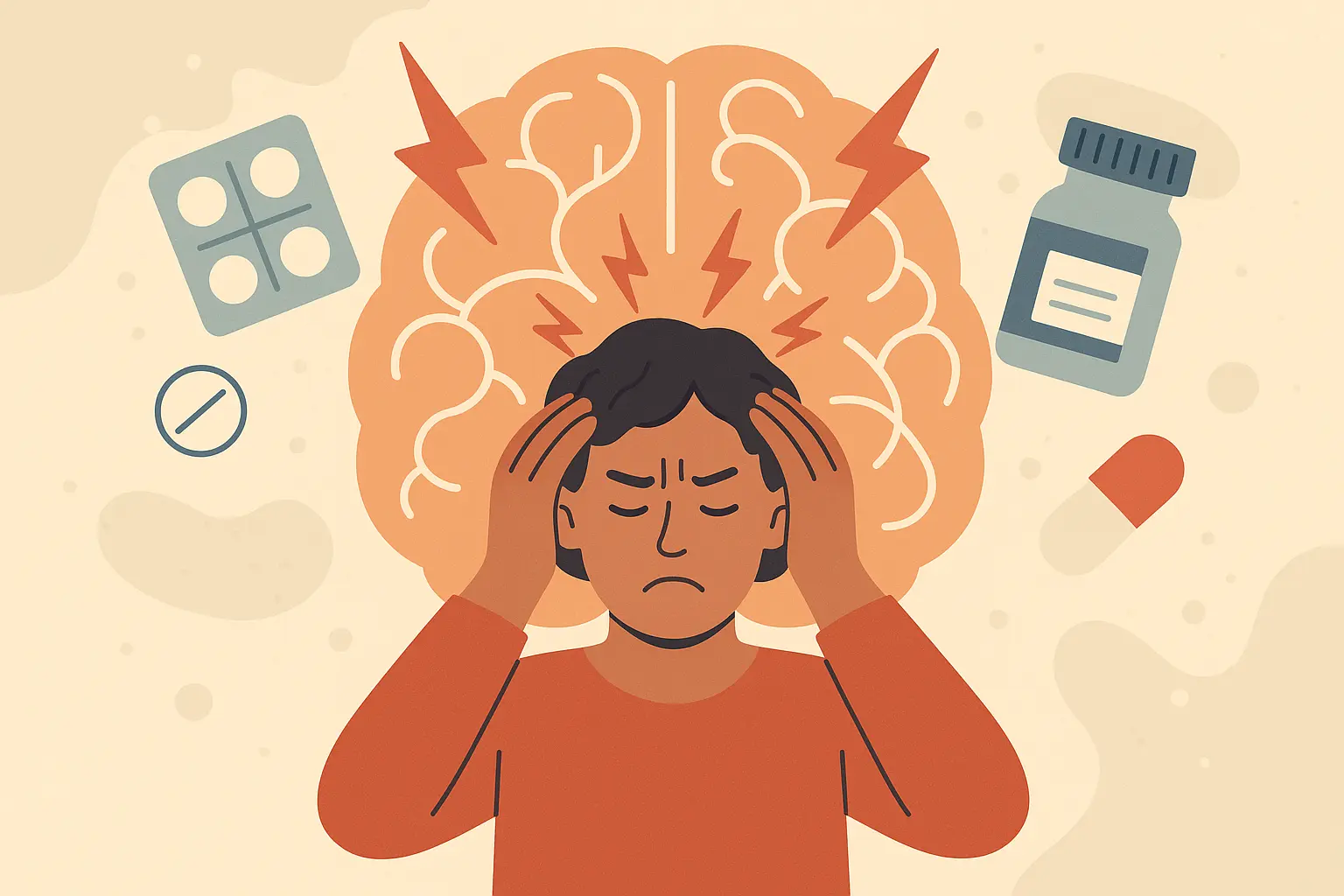
Table of Contents
- The Real Science Behind Why Migraine Cocktails Actually Work
- Building Your Personal Migraine-Fighting Formula
- Next-Level Delivery Methods That Beat Traditional Pills
- Prevention-First: Stopping Migraines Before They Start
- Your Complete Guide to Safe DIY Migraine Cocktails
- How Enov.one Takes Migraine Management to the Next Level
- Final Thoughts
TL;DR
- Migraine cocktails work by hitting multiple brain pathways at once – something single medications just can’t pull off
- Your genetics literally determine how you’ll respond to different combinations, which is why your friend’s miracle cure might do nothing for you
- Timing matters way more than most people realize – take things in the wrong order and you might as well flush your money down the toilet
- Sometimes nasal sprays and under-the-tongue tablets work better than swallowing pills, especially when you’re already nauseous
- Prevention cocktails using nutrients and supplements can actually reduce how often you get migraines by fixing what’s broken underneath
- Yes, there are safe DIY combinations that work, but you need to know what you’re doing and when to call for backup
- Modern telemedicine can actually give you personalized migraine protocols based on your unique body chemistry
The Real Science Behind Why Migraine Cocktails Actually Work
Here’s the thing about migraine cocktails – they’re not some random mix of pills you throw together and hope for the best. I used to think migraines were just really bad headaches until I started digging into the science. Turns out, they’re way more complicated than that, and that’s actually good news for us.
Think of your brain during a migraine like a highway during rush hour – everything gets backed up and chaotic. There’s this whole system called the trigeminal-vascular system (fancy name, I know) that basically acts as your brain’s main pain highway. When a migraine hits, it’s like every lane is jammed, construction crews are working overtime, and someone’s honking their horn non-stop.
Most people think migraines are just bad headaches, but they’re actually your brain having a full-blown neurological meltdown involving blood vessel changes, chemical imbalances, and inflammation cascades. A well-designed migraine cocktail doesn’t just mask the pain – it actually addresses each of these problems systematically instead of hoping one medication can handle everything.
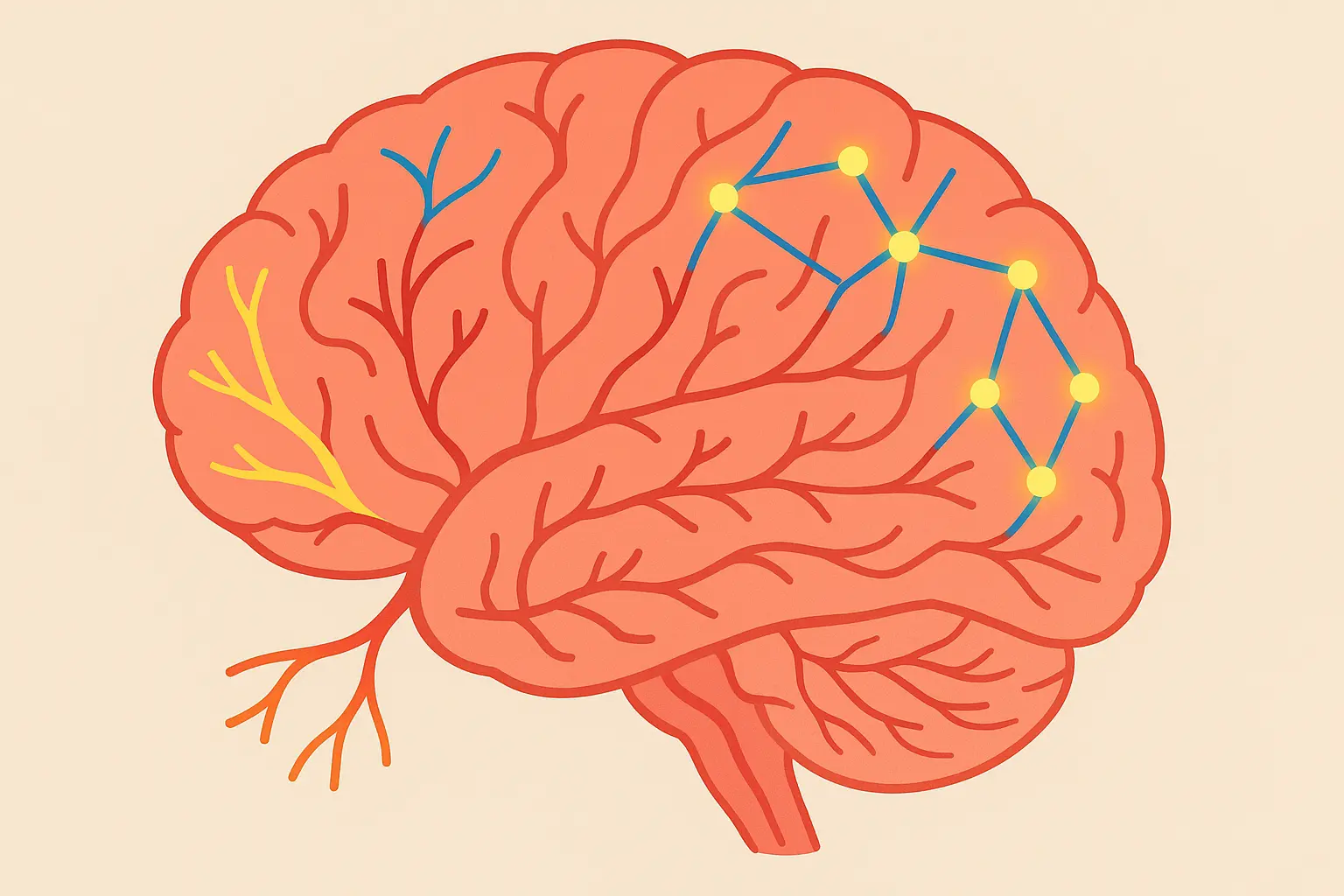
Your Brain’s Pain Highway System
You know that feeling when a migraine hits and suddenly bright lights feel like torture? That’s not you being dramatic – that’s your trigeminal-vascular system going haywire. This system becomes hypersensitive during attacks, turning normal sensations into excruciating pain. It’s like someone cranked up the volume on your brain’s pain signals to eleven.
The most effective migraine cocktail formulations target this hypersensitivity directly, essentially turning down the volume on those screaming pain signals. Without addressing this core mechanism, you’re just putting a band-aid on a broken pipe.
How CGRP Turns Your Brain Against You
There’s this protein called CGRP – don’t worry about pronouncing it – that basically tells your blood vessels to go crazy during a migraine. Think of it as your brain’s panic button getting stuck. When CGRP floods your system, it doesn’t just cause pain – it also triggers the nausea, light sensitivity, and all those other symptoms that make migraines so much worse than regular headaches.
Triptans are often the first prescription medication added after over-the-counter treatments have failed, as these drugs work by narrowing blood vessels and blocking CGRP, a protein involved in migraine pain pathways that causes blood vessels to swell and triggers the inflammation cascade that leads to migraine pain.
Smart migraine cocktails don’t just mask this chaos; they actually block CGRP at multiple points before the whole inflammatory storm takes hold. It’s like having multiple emergency brakes instead of just one.
The Serotonin Connection You Never Knew About
Here’s something that blew my mind: your serotonin system controls both how you feel pain and how your blood vessels behave during migraines. This explains why combining triptans (which mess with serotonin receptors) with anti-nausea medications creates such powerful relief – you’re hitting the pain from two different angles while also dealing with the stomach issues that prevent you from keeping medications down in the first place.
Understanding how serotonin affects your pain processing is crucial, and 5-HTP supplementation can help optimize these pathways naturally for better migraine prevention.
But here’s the kicker – serotonin dysfunction during migraines messes with way more than just pain. It disrupts your sleep, your mood, and your digestion. When your migraine cocktail includes stuff that supports healthy serotonin function, you’re not just chasing individual symptoms – you’re actually fixing multiple problems at once.
Resetting Your Hypersensitive Brain
If you’ve been dealing with chronic migraines, here’s some bad news: they’ve literally rewired your brain to be hypersensitive to things that shouldn’t hurt. But here’s the good news – this rewiring can go both ways. The most effective cocktail components work together to “reset” this sensitization, essentially teaching your brain to stop overreacting to triggers that shouldn’t cause such intense pain.
This isn’t just wishful thinking – it’s actual neuroplasticity. Just like repeated migraines made your brain more sensitive, the right migraine cocktail protocols can gradually restore normal pain processing. The key is consistency and understanding that you’re not just treating individual attacks but actually retraining your nervous system over time.
The Timing Game That Changes Everything
Okay, I’m about to throw some science at you, but stick with me because this could be the difference between relief and suffering. How drugs move through your body – the fancy term is pharmacokinetics – determines whether your migraine cocktail works or completely fails.
You can’t just take everything at once and hope for the best. That’s like showing up to a potluck with all desserts – it sounds good in theory, but you’re missing something important. Different medications have vastly different absorption rates and peak effectiveness windows.
The most successful migraine cocktail protocols time these differences perfectly, creating overlapping therapeutic windows. When one medication starts wearing off, another is hitting its peak effectiveness, giving you continuous coverage throughout the entire migraine episode instead of gaps where the pain comes roaring back.
| Medication Type | Peak Plasma Time | Duration | Optimal Timing Strategy |
|---|---|---|---|
| Triptans | 1-2 hours | 4-6 hours | Take at first sign of pain |
| NSAIDs | 2-4 hours | 6-8 hours | Take 30 minutes after triptans |
| Anti-nausea | 30-60 minutes | 4-6 hours | Take first to prevent vomiting |
| Caffeine | 30-45 minutes | 3-5 hours | Combine with analgesics |
Don’t memorize this chart – just understand that timing isn’t random. Your body has rhythms, and working with them instead of against them makes all the difference.
When Peak Plasma Levels Actually Matter
Here’s why this timing stuff matters: successful migraine cocktails coordinate when different medications reach their highest blood concentrations. It’s like having a relay race where each runner hands off the baton at exactly the right moment – there’s never a gap where your pain pathways are left undefended.
Naproxen sodium absorbs faster with “peak levels in 1–2 hours vs. 2–4 hours for regular naproxen,” which is why the most commonly used combo is a triptan plus naproxen sodium (Aleve).
Most people don’t realize that the form of medication matters just as much as what’s in it. Sodium salts absorb faster, coated pills delay absorption, and extended-release formulations provide sustained levels. Your migraine cocktail strategy needs to account for these differences if you want it to actually work.
Getting Past Your Brain’s Security System
Your brain has this thing called the blood-brain barrier that acts like a really picky bouncer at an exclusive club. It lets some molecules through quickly while others take their sweet time or get rejected entirely. Understanding these different crossing rates helps explain why certain cocktail sequences work better than others – you’re coordinating a precisely timed intervention in your brain’s pain centers.
Some medications cross into your brain within minutes, while others take hours to reach therapeutic levels. The most effective migraine cocktail protocols sequence medications based on these crossing rates, ensuring continuous protection as different components reach your brain at different times.
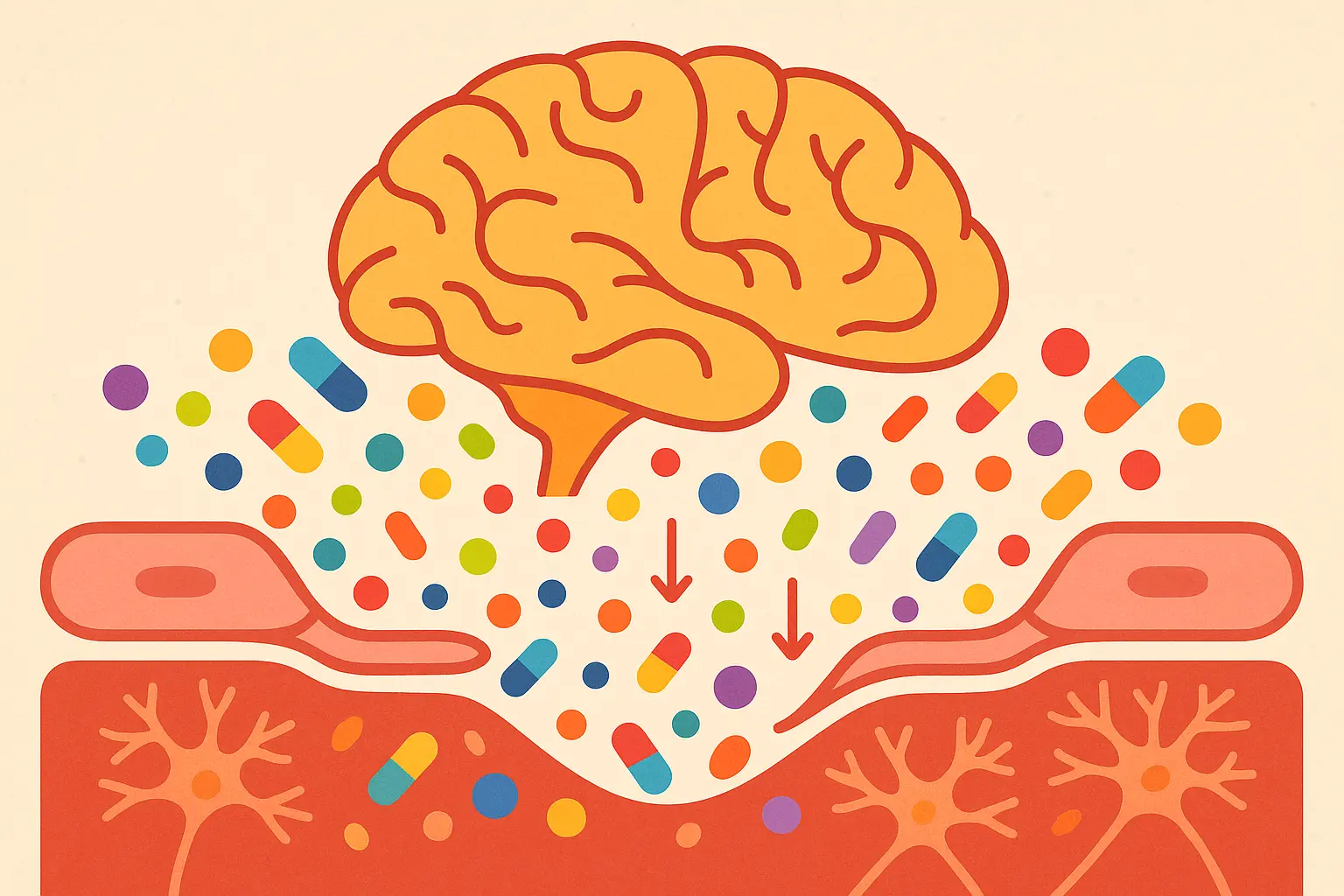
The Inflammation Factor Nobody Talks About
Here’s something that might surprise you: recent research shows that inflammation in your brain drives much of migraine pain. This isn’t about reducing swelling like you’d ice a sprained ankle – it’s about stopping the inflammatory cascade that keeps your pain cycle spinning and makes future migraines more likely.
When inflammation takes hold in your brain during a migraine, it creates this vicious cycle that can last for days even after whatever triggered it has passed. Advanced migraine cocktail approaches specifically target this inflammatory component to break the cycle rather than just managing the pain it creates.
Stopping Mast Cells From Sabotaging Your Relief
There are these immune cells called mast cells that dump histamine and keep your migraine cycle spinning, even after the initial trigger has passed. It’s like having a smoke alarm that keeps going off long after you’ve burned the toast. Advanced migraine cocktails now include components specifically designed to calm these cells down, preventing them from dumping inflammatory chemicals that turn a manageable headache into a multi-day ordeal.
These immune system reactions often explain why some people have migraines that seem to have a life of their own. When your migraine cocktail includes mast cell stabilizers, you’re addressing one of the hidden mechanisms that most people never think about.
Building Your Personal Migraine-Fighting Formula
Look, I know what you’re thinking – “Great, another article telling me that everyone’s different and I need to figure out my own solution.” But hear me out, because this is where things get actually interesting and doable.
The future of migraine treatment is all about precision medicine – fancy talk for treatments that account for your unique genetic makeup and personal trigger patterns. What works amazingly for your friend might do absolutely nothing for you, and that’s not because you’re broken or doing something wrong.
Recent advances in understanding post-viral syndrome are changing how doctors approach complex migraine cases. Healthcare providers are now recognizing that “you can get sick with something that seems like you had it for a little while and it’s gone, but really it’s not gone,” leading to better understanding of how viral infections can trigger long-term migraine patterns that need specialized approaches.
Your individual response to different migraine cocktail components depends on stuff you can’t see or feel – genetic variations in how you process drugs, transport neurotransmitters, and handle inflammation. These invisible differences explain why standard protocols work brilliantly for some people while leaving others completely frustrated and wondering what’s wrong with them.
Still with me? Good, because this next part is where understanding your personal biochemistry can actually change your life instead of just being interesting trivia.
Genetic testing reveals crucial information about your medication metabolism, and personalized healthcare approaches can optimize your migraine cocktail based on your unique genetic profile.
Your Genetic Blueprint for Pain Relief
Here’s something that might blow your mind: your genes determine how quickly you burn through medications, which receptors respond best to treatment, and even which side effects you’re likely to get. There are these enzymes called CYP450 variants that can make you a rapid or slow metabolizer of common cocktail components, dramatically affecting both how well they work and how safe they are at standard doses.
If you’re a rapid metabolizer, standard doses might wear off too quickly to give you adequate relief. If you’re a slow metabolizer, those same doses could build up and cause dangerous side effects. Your migraine cocktail needs to account for these genetic differences to be both safe and effective.
Why Your Liver Might Be Working Against You
Some people burn through acetaminophen and NSAIDs in hours while others still have active drug levels days later. Genetic testing can reveal whether you need higher doses more frequently or lower doses spaced further apart – information that could prevent both treatment failures and dangerous overdoses.
These metabolic differences aren’t just academic curiosities – they have real implications for whether your migraine cocktail actually works. Understanding your personal metabolism patterns can explain why certain combinations haven’t worked in the past and guide you toward more effective approaches.
The Neurotransmitter Transport Problem
There are genetic variants that affect how serotonin and dopamine get transported in your brain, which predicts which cocktail combinations will actually reach your brain’s pain centers effectively. If you’ve tried multiple migraine treatments without success, the problem might not be the medications themselves but how your genetic makeup affects their ability to get where they need to go.
These transport issues can make even the best-designed migraine cocktail useless if the active ingredients can’t reach their target receptors in adequate concentrations. Understanding your transporter genetics can guide you toward delivery methods and formulations that work better with your individual physiology.
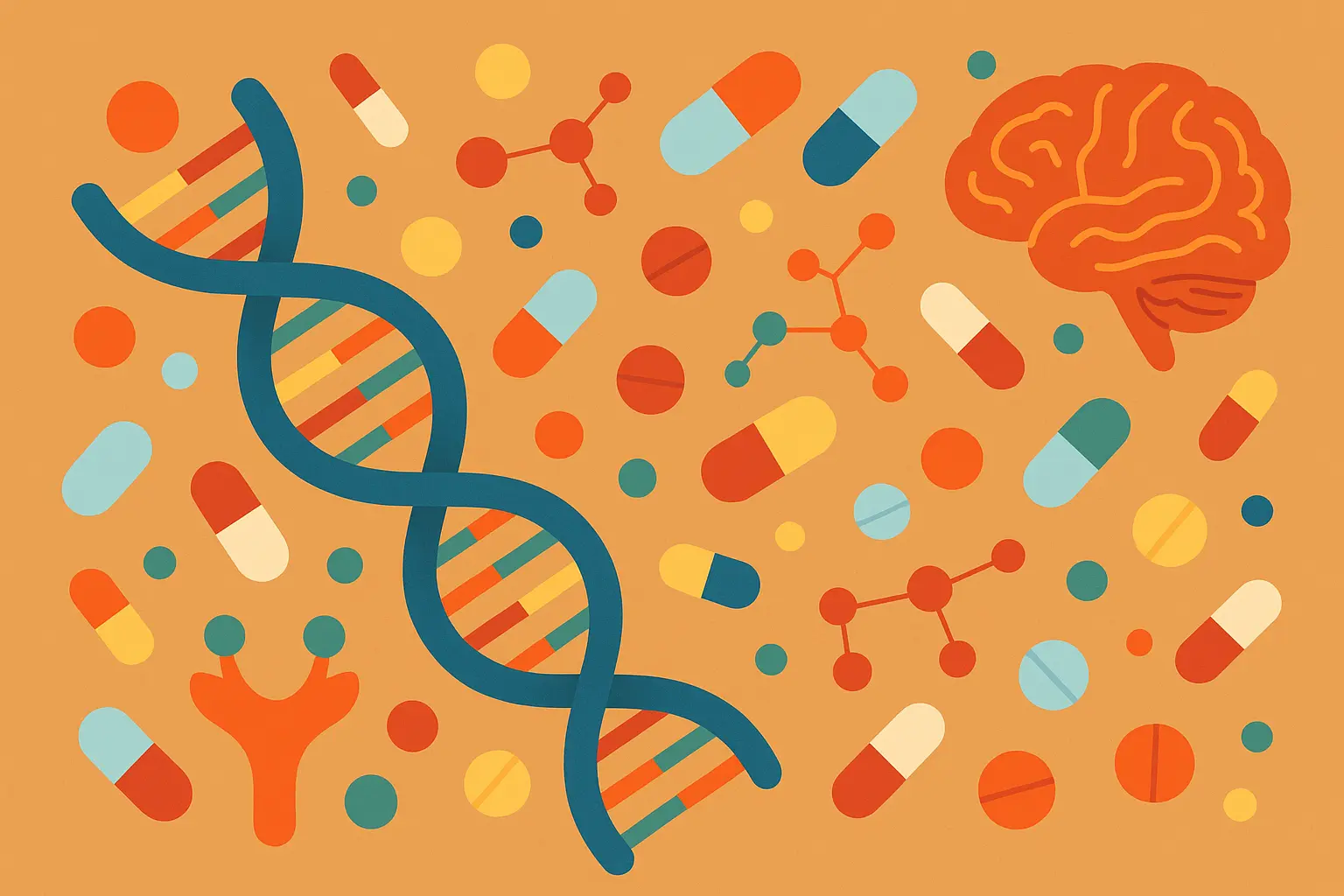
Using Your Body’s Signals to Guide Treatment
Advanced practitioners are now using blood work to look at inflammatory markers, hormone levels, and nutrient status to customize cocktail components rather than just throwing standard protocols at everyone and hoping something sticks. Your blood work can reveal crucial information about which pathways are driving your migraines and which interventions are most likely to succeed.
Standard medical testing often misses the subtle imbalances that contribute to migraine susceptibility. More comprehensive testing looks at how your cells actually function, how you use nutrients, and what inflammatory patterns might be making your brain’s pain processing systems go haywire.
When you understand what’s actually happening in your body at the cellular level, you can design migraine cocktail approaches that address root causes instead of just managing symptoms after they show up to ruin your day.
The Magnesium Connection That Changes Everything
Here’s something most doctors don’t test for properly: intracellular magnesium levels. The standard blood test most doctors run doesn’t tell you what’s happening inside your cells, where magnesium actually does its work. Low cellular magnesium can sabotage even the best-designed treatment protocols, which is why comprehensive testing and targeted supplementation often become crucial parts of successful migraine management.
Proper magnesium supplementation is foundational for migraine prevention, and understanding magnesium’s role in neurological health can dramatically improve your cocktail’s effectiveness.
Take Sarah, a 34-year-old marketing executive who was getting weekly migraines despite trying multiple prescription cocktails. When functional testing revealed severe intracellular magnesium deficiency, her neurologist added magnesium glycinate 400mg daily to her regimen. Within three weeks, her migraine frequency dropped from 4-5 per week to 1-2 per month, and her rescue medications became way more effective.
Histamine: The Hidden Migraine Trigger
There’s this enzyme called DAO that breaks down histamine, and if yours isn’t working well, you might be dealing with histamine intolerance without even knowing it. Your migraines could actually be inflammatory reactions to foods and environmental triggers that could be prevented with the right cocktail modifications.
Histamine reactions can trigger migraines through multiple pathways – blood vessel changes, immune cell activation, and direct effects on your nervous system. When your migraine cocktail includes targeted antihistamine components, you’re addressing a trigger mechanism that conventional approaches often miss completely.
Your Methylation Status Affects Everything
I know, I know – we’re talking about genes and enzymes and your liver, and you probably just want your head to stop hurting. But here’s the thing: there are genetic variants called MTHFR that affect how your body processes B-vitamins commonly included in comprehensive migraine cocktails. If you have methylation issues, standard B- vitamin forms might actually make your migraines worse, while methylated forms could provide dramatic relief – but only if you know to look for this connection.
Methylation problems affect neurotransmitter production, detoxification, and inflammatory regulation – all crucial factors in migraine susceptibility. Your migraine cocktail strategy needs to account for these genetic variations to avoid inadvertently making your condition worse while trying to help it.
Next-Level Delivery Methods That Beat Traditional Pills
Before we dive into the fancy alternatives, let’s be real – if you’re throwing up every 20 minutes, you’re probably not going to absorb much of anything you swallow. That’s why delivery method can be just as important as what’s actually in your migraine cocktail.
When you’re dealing with severe migraines, your digestive system often shuts down completely. There’s this thing called gastroparesis that happens during attacks, where your stomach basically goes on strike. Pills can sit there for hours without being absorbed, leaving you suffering while your medication goes to waste.
Modern delivery systems bypass these absorption problems entirely, getting therapeutic levels into your bloodstream within minutes rather than hours. These aren’t just fancy alternatives – they’re often the difference between effective treatment and continued misery.
The bioavailability differences between delivery methods can be dramatic. While oral medications might achieve 30-50% absorption during a migraine attack, alternative routes can deliver 80-90% of the active ingredient directly where you need it.
Bypassing Your Digestive System Entirely
Nasal and under-the-tongue routes avoid your stomach and liver completely, which normally destroy many medications before they reach your bloodstream. When you’re dealing with migraine-induced nausea and your stomach has basically gone on strike, these alternative routes can mean the difference between keeping your medication down and losing it to vomiting within minutes.
Your nasal passages and the tissue under your tongue have rich blood supplies that allow for rapid absorption directly into your circulation. This bypasses the stomach entirely, eliminating the absorption delays and destruction that make oral migraine cocktails unreliable during severe attacks.
Nasal Sprays That Actually Work
Here’s the thing about nasal sprays – most people think you just squirt liquid medication up your nose and hope for the best. But specialized intranasal formulations use fancy stuff like mucoadhesive polymers and penetration enhancers to dramatically improve absorption through your nasal membranes.
These aren’t just liquid medications shot up your nose – they’re engineered delivery systems that can get therapeutic levels into your bloodstream in minutes rather than hours. The key is understanding that effective nasal delivery requires specific techniques that most people don’t know about.
Under-the-Tongue Technology
Controlled-release sublingual tablets provide sustained drug delivery while completely avoiding your stomach and liver’s destruction. The rich blood supply under your tongue allows for rapid absorption, and newer systems can provide hours of steady medication release from a single dose.
Sublingual delivery works particularly well for migraine cocktail components that are normally destroyed by stomach acid or liver metabolism. You get higher bioavailability with lower doses, reducing side effects while improving effectiveness.
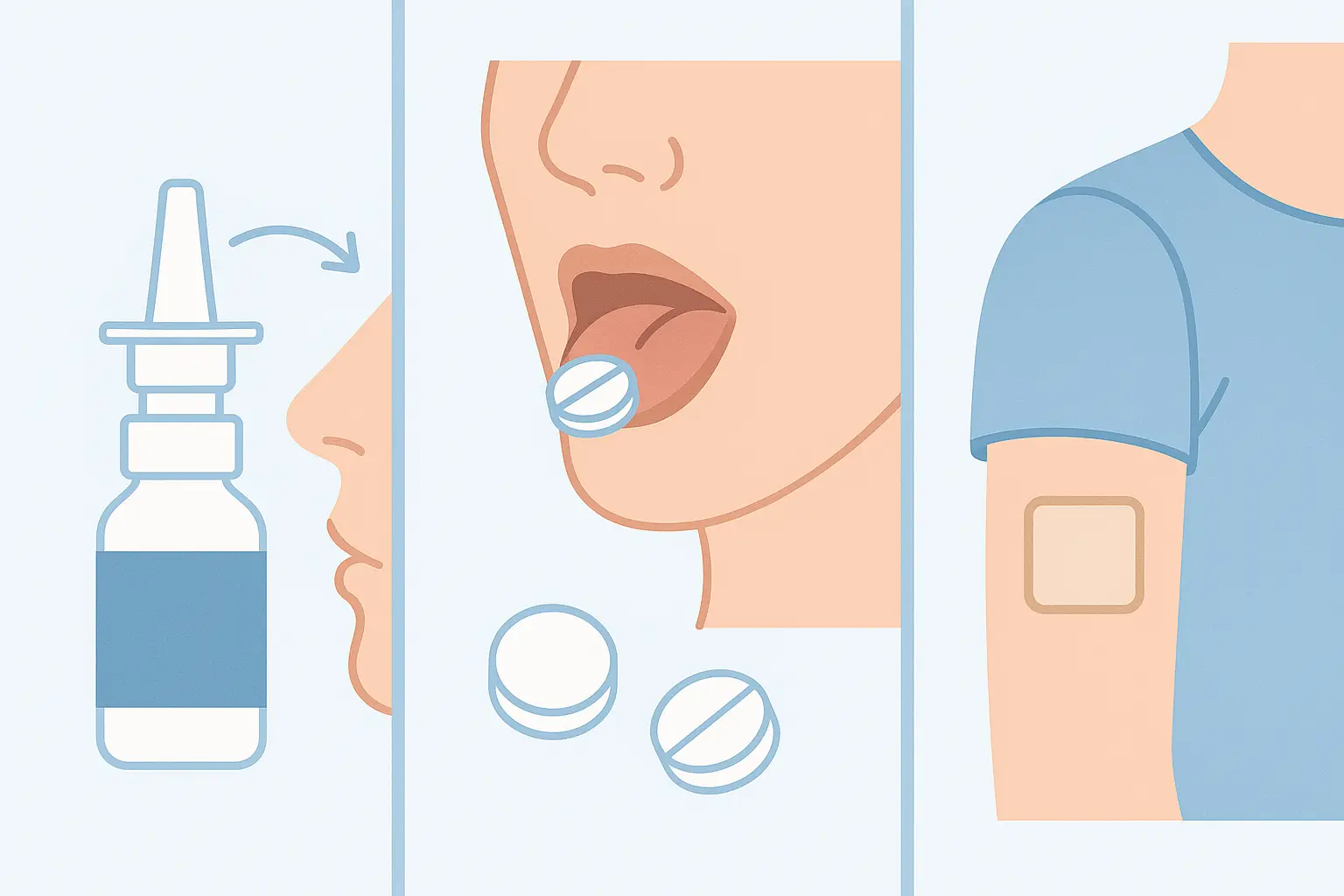
Targeting Pain at the Source
Transdermal and topical applications deliver medications directly to specific pain pathways while minimizing the side effects that often limit how much oral medication you can take. Instead of flooding your entire body with drugs, these targeted approaches concentrate therapeutic levels exactly where you need them most.
Topical migraine cocktail formulations can target the trigeminal nerve branches directly, providing localized relief without the systemic side effects. This approach works particularly well for people who can’t tolerate higher doses of oral medications.
Electric-Assisted Drug Delivery
Okay, this sounds scary, but bear with me. Iontophoresis uses mild electrical current to push cocktail components through your skin barriers, achieving therapeutic tissue levels that topical creams alone can’t reach. This technology transforms medications that normally require injection into painless, self-administered treatments you can use at home.
The electrical current creates temporary pores in your skin that allow larger molecules to penetrate deeply into tissue. For migraine cocktail applications, this means you can deliver therapeutic levels of medications that would normally require IV administration.
Bringing the ER Home
Portable infusion systems now allow patients to self-administer IV cocktails at home under medical supervision, providing emergency-room-level treatment without the wait times, costs, and exposure risks of hospital visits.
Modern urgent care facilities are now offering specialized migraine cocktails as standard treatment. In-person urgent care providers can give medications, including a “migraine cocktail” – a combination of shots to treat migraine pain that generally include a high-dose non-steroidal anti-inflammatory drug (NSAID) and an anti-nausea medication, making professional-grade treatment more accessible than ever.
Home infusion programs are expanding rapidly, allowing people with severe migraines to access cocktail infusion therapy without emergency room visits. These programs provide the same therapeutic benefits as hospital-based treatments while eliminating many of the barriers that prevent people from getting timely care.
Smart Monitoring for Safe Home Treatment
Wearable devices track your vital signs and drug levels during home infusion protocols, automatically alerting healthcare providers if anything goes wrong while maximizing the convenience of treating severe migraines in your own environment.
Remote monitoring technology has made home migraine cocktail infusion much safer than it was even a few years ago. Real-time data transmission allows healthcare providers to supervise treatment remotely while you receive care in the comfort of your own space.
Custom Formulations from Specialized Pharmacies
Compounding pharmacies create personalized IV cocktail formulations based on your individual profile and physician protocols, allowing for precise customization that hospital pharmacies simply can’t match.
These specialized formulations can include combinations of medications that aren’t available in commercial preparations, tailored specifically to your genetic profile and treatment response history. The level of customization possible through compounding opens up migraine cocktail options that would be impossible with standard pharmaceutical products.
Prevention-First: Stopping Migraines Before They Start
Here’s what nobody tells you about migraine prevention: it’s not about finding one magic bullet. It’s about slowly building up your brain’s defenses so those triggers that used to knock you flat barely register anymore.
Look, I get it – when you’re in the middle of a migraine, prevention advice feels pretty useless. But stick with me here, because this approach focuses on creating a brain chemistry that’s naturally resistant to migraine triggers rather than having better rescue medications on hand.
Prevention requires understanding that migraines aren’t random events – they’re the result of specific biochemical vulnerabilities that can be identified and corrected. When you address these root causes systematically, you can often reduce both how often you get migraines and how severe they are, while reducing your dependence on rescue treatments.
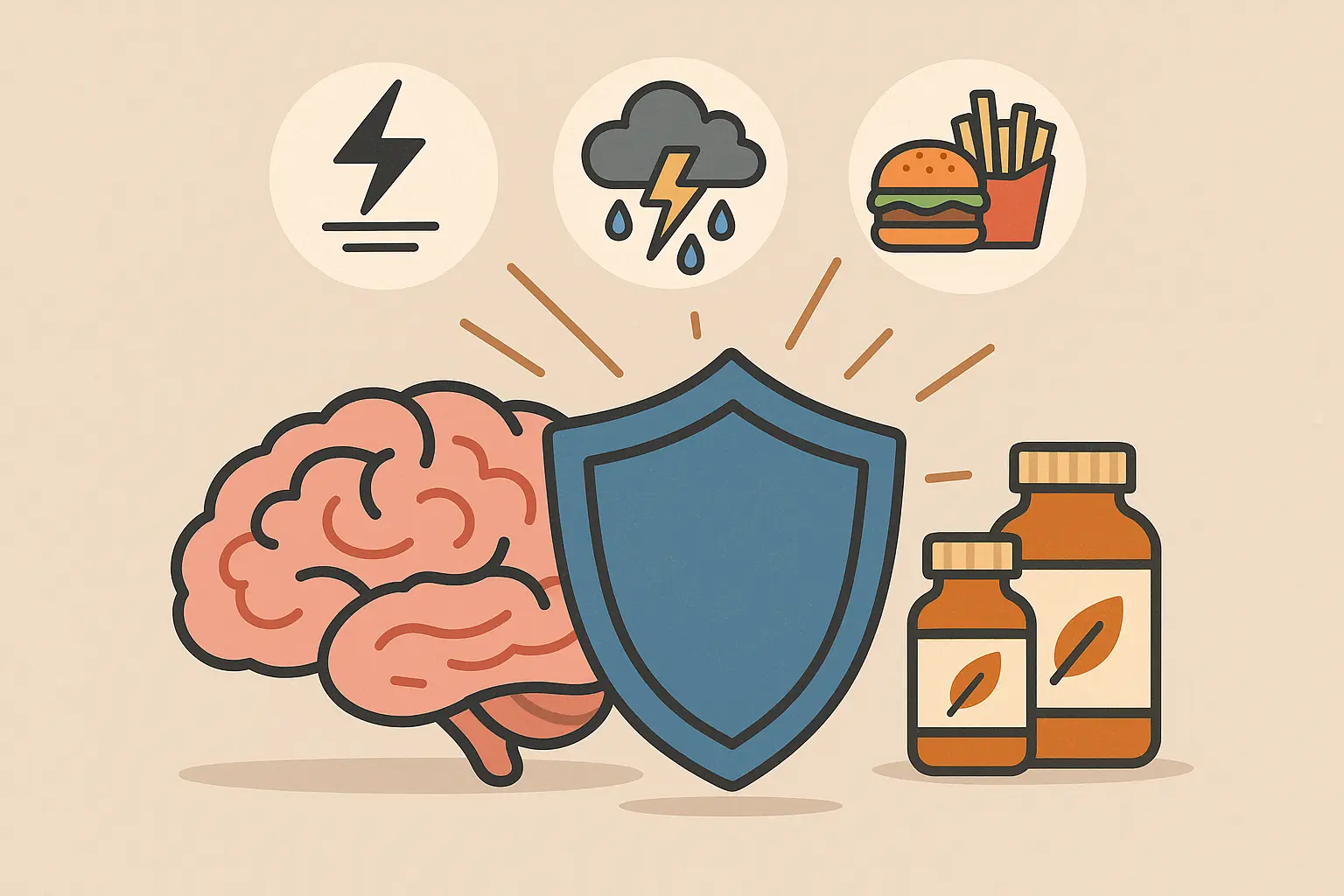
Fixing the Nutrient Deficiencies Nobody Tests For
Systematic correction of nutrient deficiencies creates a brain chemistry environment that’s way less prone to migraine triggers. These aren’t the standard vitamin deficiencies your regular doctor checks for – they’re specific nutrient imbalances that directly affect your brain’s pain processing and blood vessel regulation systems.
Most healthcare providers test for severe deficiencies that cause obvious diseases, but they miss the subtle imbalances that contribute to migraine susceptibility. Functional testing reveals these hidden deficiencies that can make the difference between frequent attacks and long periods of relief.
Powering Up Your Brain’s Energy Centers
CoQ10, riboflavin, and magnesium combinations support cellular energy production in migraine-prone brain regions, essentially giving your neurons the fuel they need to resist the metabolic stress that triggers attacks. When your brain cells have adequate energy reserves, they’re much less likely to spiral into the dysfunction that creates migraine pain.
Supporting your brain’s energy production is crucial for migraine prevention, and optimizing mitochondrial function can reduce your susceptibility to migraine triggers.
Here’s a real example: one migraine sufferer found that a combination of magnesium glycinate, vitamin B2, and CoQ10 reduced migraine frequency from once or twice a week to only once or twice a month, with significantly shorter and less painful episodes. They noticed improvement within just one week of starting the regimen.
Think of it this way – mitochondrial dysfunction in brain cells creates the metabolic instability that makes you vulnerable to migraine triggers. When you provide the specific nutrients needed for optimal cellular energy production, you’re addressing one of the fundamental mechanisms that underlies migraine susceptibility.
The Anti-Inflammatory Nutrient Team
Omega-3 fatty acids, curcumin, and specialized pro-resolving mediators work together to reduce the neurogenic inflammation that primes your brain for migraine attacks.
| Preventive Nutrient | Daily Dosage | Mechanism | Timeline for Results |
|---|---|---|---|
| Magnesium Glycinate | 400-600mg | Stabilizes nerve membranes | 2-4 weeks |
| Riboflavin (B2) | 400mg | Improves cellular energy | 6-12 weeks |
| CoQ10 | 100-300mg | Enhances mitochondrial function | 4-8 weeks |
| Omega-3 EPA/DHA | 2-3g | Reduces inflammation | 8-12 weeks |
This isn’t about taking random anti-inflammatory supplements – it’s about creating a coordinated nutritional approach that addresses inflammation at the cellular level.
Chronic low-grade inflammation creates the perfect environment for migraine triggers to cause maximum damage. When you systematically reduce this inflammatory burden through targeted nutrition, you’re making your brain much more resilient to the stressors that would normally trigger attacks.
Hormonal Balance That Actually Prevents Attacks
Addressing hormonal fluctuations through targeted supplementation can prevent hormonally-triggered migraine episodes before they start, rather than treating the pain after hormonal changes have already set the migraine cascade in motion.
Hormonal balance is crucial for migraine prevention, especially for women, and understanding female hormone optimization can significantly reduce migraine frequency.
Hormonal migraines often follow predictable patterns related to menstrual cycles, perimenopause, or other hormonal transitions. When you understand these patterns and address the underlying hormonal imbalances, you can often prevent the attacks entirely rather than just managing them after they start.
Optimizing Estrogen Metabolism
Supporting healthy estrogen metabolism through specific nutrients reduces hormonal migraine triggers by ensuring your body processes estrogen through beneficial pathways rather than inflammatory ones that promote migraine susceptibility.
Estrogen metabolism happens through multiple pathways, and some produce inflammatory metabolites that can trigger migraines while others are protective. Targeted nutrition can shift your metabolism toward the protective pathways, reducing your vulnerability to hormonal migraine triggers.

Your Complete Guide to Safe DIY Migraine Cocktails
Before you start mixing pills like you’re a pharmacist, let’s talk safety. I’m not trying to scare you, but over-the-counter doesn’t mean harmless. Your liver processes everything, whether you bought it at CVS or got it from a doctor.
Understanding how to safely create effective over-the-counter migraine cocktails at home requires knowledge of drug interactions, proper timing protocols, and clear criteria for when to escalate to professional care. While DIY approaches can be incredibly effective, they require the same systematic thinking that goes into prescription cocktails – just with readily available ingredients.
The key to successful DIY migraine cocktail creation is understanding that you’re working with real medications that have real effects and real risks. Treating over-the-counter drugs casually because they’re available without prescription can lead to dangerous interactions and rebound headaches that make your condition worse over time.
Safety comes first in any DIY approach. You need to understand proper dosing, timing, contraindications, and when your home treatment isn’t working well enough to handle the situation safely.
Evidence-Based Combinations You Can Buy Today
Research-backed combinations of readily available medications can provide significant relief when properly formulated and timed, but success depends on understanding the science behind why these combinations work and how to implement them safely.
The most effective OTC migraine cocktail combinations target multiple pain pathways simultaneously while maintaining safety margins that prevent dangerous interactions or overdoses. These aren’t random combinations – they’re based on the same principles used in prescription protocols.
The Triple Threat That Actually Works
Acetaminophen (1000mg) + Ibuprofen (400mg) + Caffeine (100mg) creates synergistic pain relief through different mechanisms while maintaining safety margins. This combination targets pain through multiple pathways: acetaminophen affects central pain processing, ibuprofen reduces inflammation, and caffeine enhances absorption while providing mild vasoconstriction.
Here’s how to prepare this safely:
- Document your baseline pain level and symptoms
- Check for contraindications and current medications
- Start with lower doses to assess your tolerance
- Time administration for optimal peak plasma overlap
- Monitor your response and side effects for 4-6 hours
Triptans should be limited to 10 days a month or about twice a week to avoid rebound headaches, while NSAIDs can be taken up to 15 days per month when used alone.
The timing of this OTC migraine cocktail matters just as much as the ingredients. Taking everything at once might seem logical, but staggered administration often provides better results with fewer side effects.
Adding Anti-Nausea Protection
Integrating OTC antihistamines like meclizine or dimenhydrinate addresses the stomach shutdown component that often prevents oral medication absorption during migraine attacks. Without addressing nausea first, even the best oral cocktails can end up in your toilet rather than your bloodstream.
Nausea medications need to be taken first in your sequence because they take time to work and because vomiting can eliminate everything else you’ve taken. This is why emergency room migraine cocktail protocols always start with anti-nausea medications before adding pain relievers.
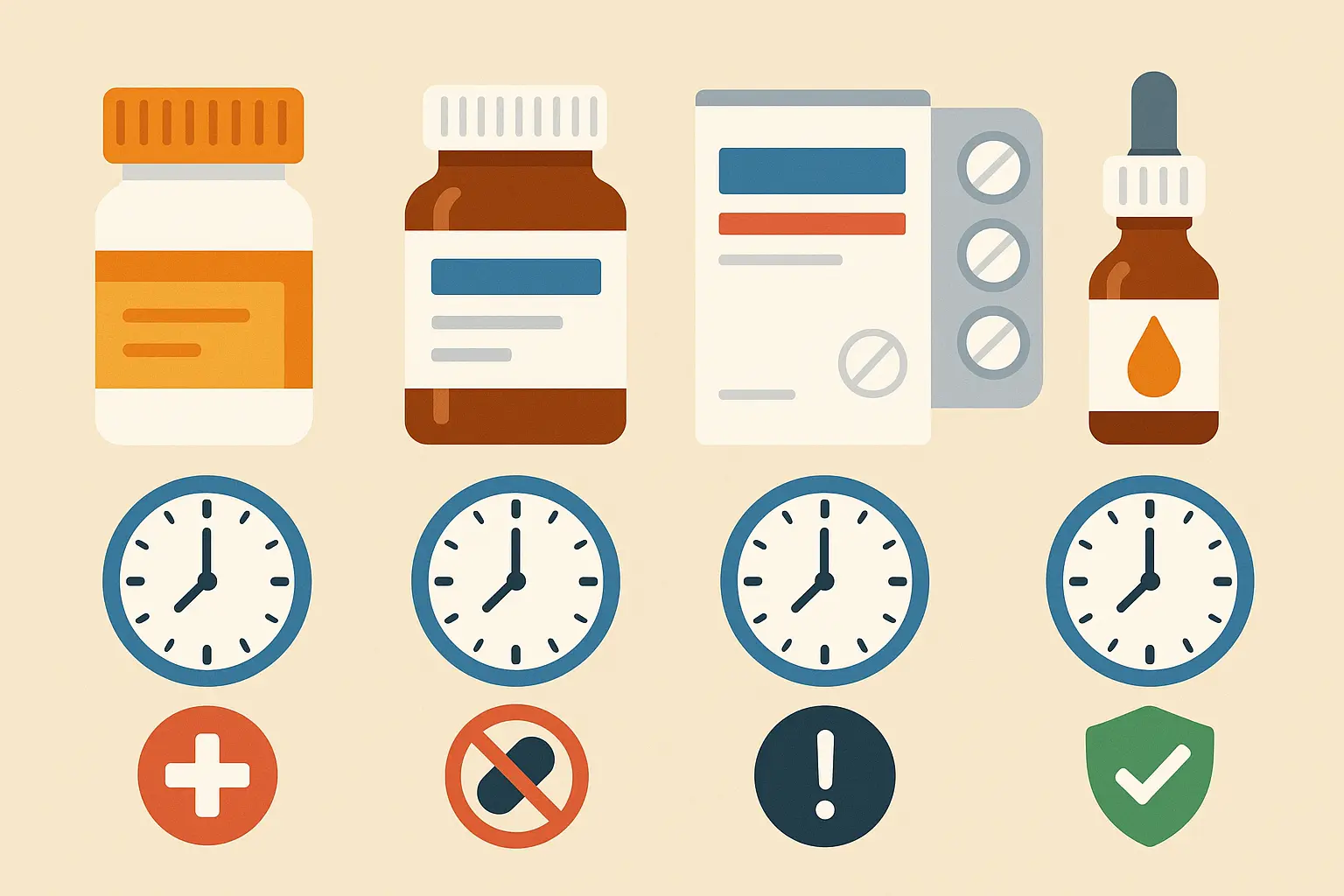
Mastering the Timing Game
The order and timing of OTC cocktail components dramatically affects how well they work and reduces your risk of rebound headaches. Getting this wrong can turn an effective combination into a complete failure or even make your migraines worse over time.
Proper timing creates overlapping therapeutic windows that provide more consistent relief than taking everything simultaneously. Each medication has its own absorption curve, and coordinating these curves maximizes your chances of success.
The 30-60-90 Minute Rule
Stagger medications at 30-minute intervals based on their absorption rates: fast-acting analgesics first, followed by anti-inflammatories, then sustained-release components. This creates overlapping therapeutic windows that provide more consistent relief than taking everything at once.
Understanding absorption kinetics allows you to engineer your relief rather than hoping for the best. When you know how long each component takes to reach peak effectiveness, you can time your doses to maintain continuous coverage throughout the entire migraine episode.
Coordinating Hydration with Medication
Electrolyte replacement timing coordinates with medication absorption to enhance bioavailability and prevent dehydration-induced rebound headaches. The right fluids at the right time can double the effectiveness of your oral medications.
Dehydration during migraines creates a vicious cycle where your medications don’t absorb properly, your pain continues, and the stress of continued pain worsens the dehydration. Breaking this cycle requires strategic fluid replacement that supports rather than interferes with your medication absorption.
Take Mark’s DIY protocol: he takes 25mg of meclizine first, followed 15 minutes later by 1000mg acetaminophen with 200mg of caffeine, then 400mg ibuprofen 30 minutes after that, all with 16oz of electrolyte solution. This staggered approach reduced his migraine duration from 12-18 hours to 4-6 hours with significantly less pain intensity.
Knowing When to Call for Help
Establishing clear criteria for when home cocktails aren’t working prevents dangerous delays in seeking emergency care. If your pain isn’t improving within 2 hours, you’re vomiting repeatedly, or you develop neurological symptoms, it’s time to escalate to professional treatment.
I hate to be the bearer of bad news, but sometimes home treatment isn’t enough. If you’re reading this list and thinking “oh crap, that’s me right now,” please don’t mess around. Get help.
Emergency Warning Signs Checklist:
- Sudden, severe headache unlike any you’ve had before
- Headache with fever, stiff neck, or rash
- Headache with confusion or difficulty speaking
- Headache after a head injury
- Headache with vision changes or weakness
- Vomiting that prevents keeping medications down
- Pain level 9-10/ 10 that doesn’t respond to treatment

How Enov.one Takes Migraine Management to the Next Level
Look, after diving deep into all this migraine cocktail science, there’s a pretty obvious gap in current healthcare: most doctors just don’t have the time or tools to create truly personalized treatment approaches that account for your unique biochemistry and lifestyle factors. That’s where Enov.one’s comprehensive telemedicine platform comes in, and honestly, it addresses this challenge in ways that traditional healthcare systems simply can’t.
Through advanced functional health assessments, Enov.one can identify the underlying biochemical imbalances that make you susceptible to migraines in the first place. Their personalized medication plans incorporate both FDA-approved and compounded medications, allowing for the kind of customized cocktail approaches that your regular doctor’s office just isn’t set up to provide.
For those dealing with sleep-related migraine triggers, Enov.one’s comprehensive approach includes targeted sleep optimization protocols that address root causes rather than just symptoms.
By offering treatments like B12 injections, NAD+, and glutathione – all components that support the mitochondrial and anti-inflammatory pathways crucial for migraine prevention – Enov.one provides the foundational support that traditional migraine cocktails often miss completely. Their commitment to ongoing monitoring and adjustment aligns perfectly with the personalized approach needed for effective migraine management, where treatment plans must evolve based on your individual response patterns and changing health status.
Ready to move beyond one-size-fits-all migraine treatment? Enov.one’s flat pricing guarantee removes financial barriers to accessing these advanced, personalized treatments, making precision migraine management accessible when you need it most.
Final Thoughts
Look, I wish I could promise you that reading this blog will cure your migraines forever. Life doesn’t work that way. But what I can tell you is this: you have more options than you probably realized, and you’re not crazy for wanting something better than just “dealing with it.”
Migraine cocktails represent a fundamental shift from just treating symptoms to actually understanding and interrupting the complex brain chemistry that creates debilitating pain. What I’ve learned through researching this topic is that effective migraine management isn’t about finding one magic bullet – it’s about creating personalized, multi-targeted approaches that account for your unique genetics, biochemistry, and trigger patterns.
The science behind these cocktails reveals why so many people struggle with traditional single-medication approaches. Your brain during a migraine attack is experiencing a perfect storm of blood vessel changes, neurotransmitter imbalances, and inflammatory cascades that require coordinated intervention at multiple points. Whether you’re working with over-the-counter combinations at home or exploring advanced delivery systems and personalized formulations, success comes from understanding these underlying mechanisms rather than just throwing medications at the problem and hoping something sticks.
Will this work for everyone reading this? Honestly, no. Some of you might try everything I’ve suggested and still end up in the ER. That doesn’t mean you’re broken – it just means migraines are really, really complicated. But for many people, understanding these principles can be the difference between suffering through attacks and actually getting your life back.
Most importantly, the future of migraine treatment lies in prevention-focused approaches that address root causes rather than managing attacks after they start. By correcting nutrient deficiencies, optimizing hormone metabolism, and supporting your brain’s natural resistance to migraine triggers, you can potentially reduce both the frequency and severity of attacks while reducing your dependence on rescue medications.
Remember that while DIY approaches can be incredibly effective, they require the same systematic thinking and safety precautions that go into prescription protocols. Know your limits, understand when to escalate care, and don’t hesitate to work with healthcare providers who understand the complexity of migraine management and can help you develop truly personalized treatment strategies.
The bottom line? You’re not stuck with whatever migraine pattern you have now. There are options, and with some patience and maybe a little trial and error, you can find something that actually helps.
